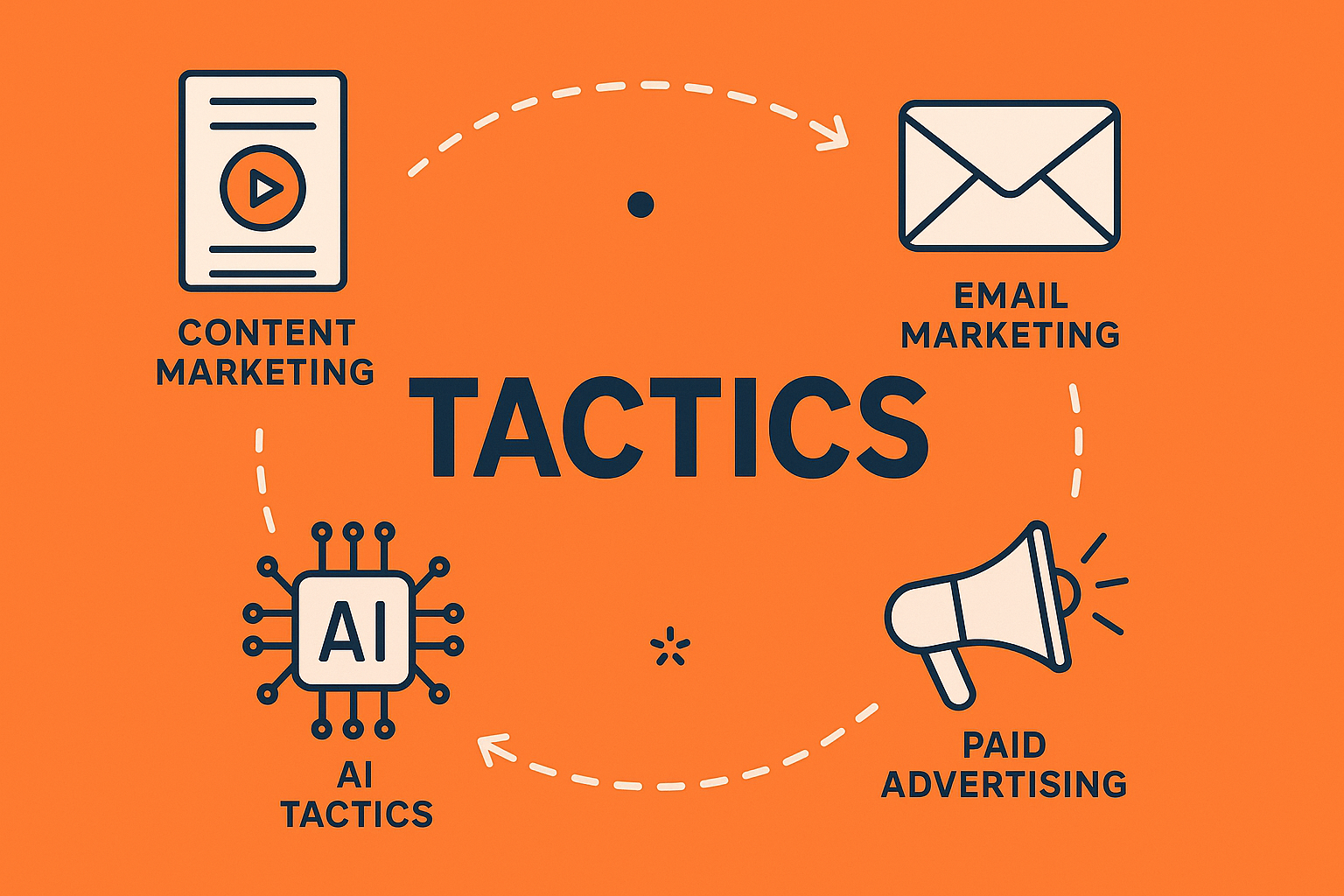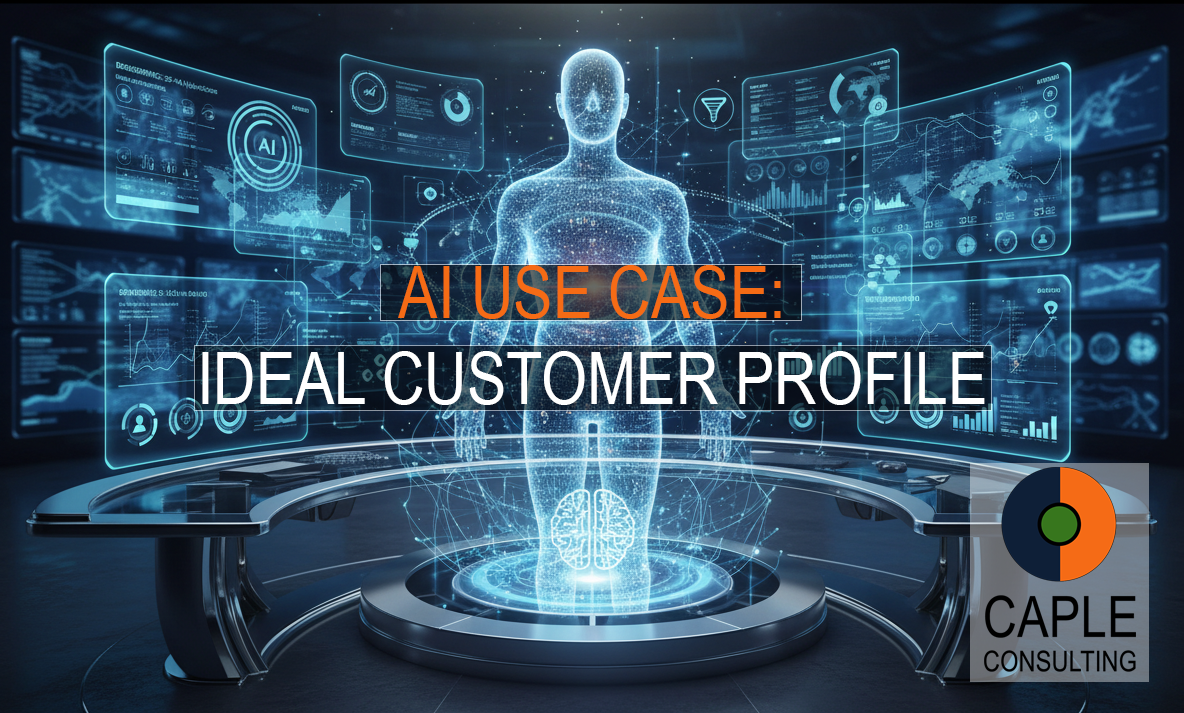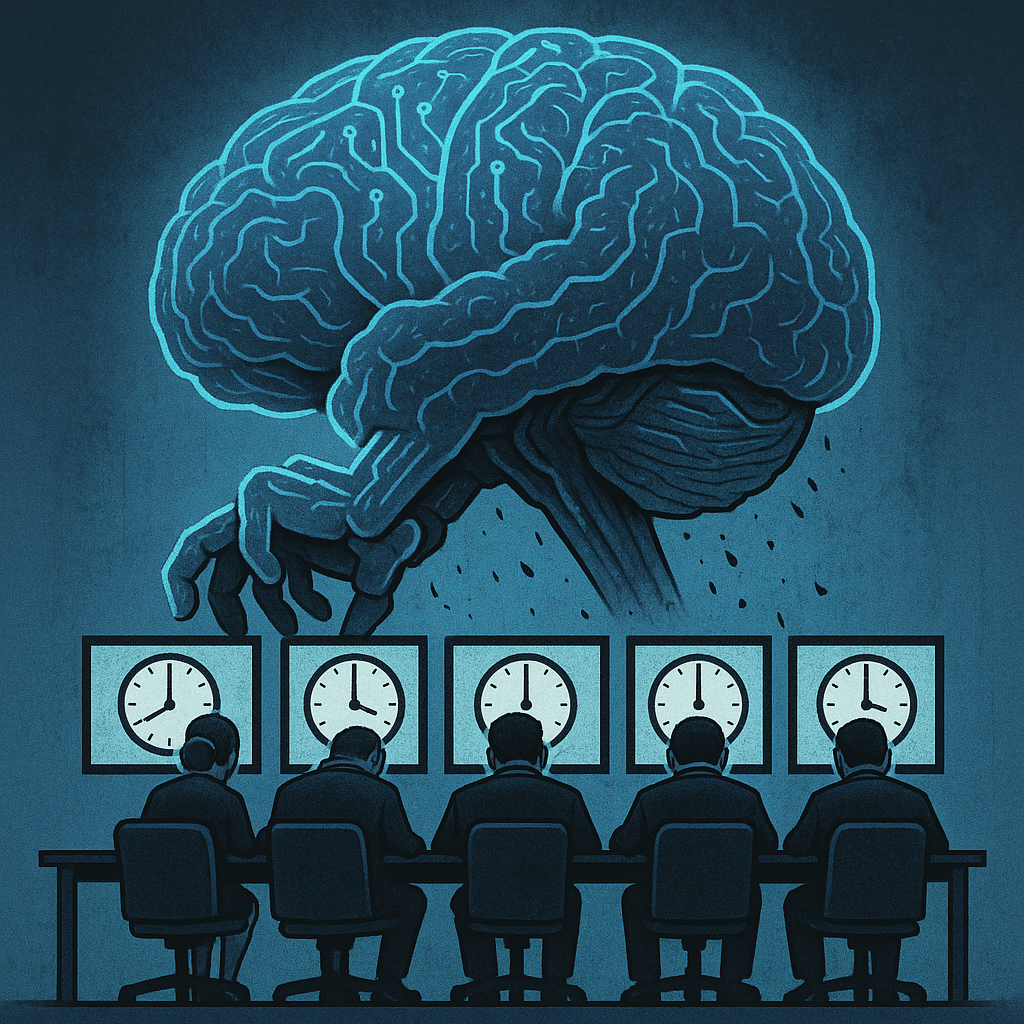Create ICPs with deeper insights for more personalised marketing using AI. Personalised marketing...
What Digital Marketing Tactics Should I Use?

About Digital Marketing Tactics
Marketing tactics are the practical actions businesses take to reach their target audience through different marketing channels. They are designed to attract attention, generate leads, increase sales, and strengthen a brand’s position in the market.
Unlike a marketing strategy (the big-picture plan), tactics are the methods and actions used to execute that plan. The right set of marketing tactics can help a business stand out from competitors, maximize return on investment, and adapt to changing customer behaviour.
Marketing Tactics also differ depending on industry, company size, budget, and business stage.
Key Go-To Digital Marketing Tactics
-
Content Marketing
Content marketing tactic is a long-term tactic focused on creating and distributing valuable, relevant, and consistent content to attract and engage a specific audience. Instead of pushing products directly, it builds trust and positions the brand as an authority.
- Examples: blog posts, case studies, videos, podcasts, social media updates, infographics, and eBooks.
- Benefits: improves search engine rankings, increases brand awareness, builds customer loyalty, and generates inbound leads.
- Why it works: customers increasingly research online before buying. High-quality content answers their questions and keeps them coming back.
I have found that doing this well takes a lot of effort and with zero-click search on the rise it's not a consistent tactic for lead generation, but does play an important part.
AI is helping to do the heavy lifting and enabling marketers to produce more content, this article is a case in point, 80% AI generated (No shame). While I am only providing an introduction to the topic it's fundamentally sound allowing me to just tweak and add comments for the human touch.
-
Email Marketing
Email marketing tactics allow businesses to communicate directly with their audience in a personal and cost-effective way. Well-timed and personalised emails can strengthen customer relationships and drive repeat sales.
- Examples: Newsletters (Making a comeback), promotional offers, automated workflows and relationship building.
- Benefits: Measurable data such as open rates and click-throughs, higher customer retention, and strong ROI (email is one of the highest-return marketing channels).
- Why it works: Email feels direct, private, and tailored—making it ideal for nurturing leads and building brand loyalty.
This is an antidote to the diminishing returns we are seeing from content marketing but goes hand in hand, a way of connecting your audience to your valuable content.
Sounds like I'm giving the green light to cold mass email campaigns, but let me stop you there. Earned data, contacts that have previously engaged or signed up, is where you'll find the best results. If your making new connections make sure your matching your recipients with messages that are relevant and always personalise.
-
Paid Advertising
Paid advertising is a tactic that provides immediate visibility and access to highly targeted audiences. Businesses use platforms such as Google Ads, Meta (Facebook/Instagram) Ads, LinkedIn Ads, and YouTube Ads to reach users based on demographics, location, interests, and online behaviour.
- Examples: Search ads, display ads, video ads, and sponsored social posts.
- Benefits: Fast traffic growth, measurable performance through analytics, scalable campaigns, and higher conversions.
- Why it works: Unlike organic marketing, paid ads guarantee reach and can be optimised in real time for better ROI.
Do the research, where will your audience be most receptive to your message and call to action.
I find that on platforms such as Google and LinkedIn, the more narrow your targeting the higher the cost so finding the ROI balance is key, you may need to utilise multiple channels to scale.
Think outside the box, paid ads on podcast networks may cut through the noise of traditional platforms for example.
-
AI-Powered Marketing Tactics
AI tactics are becoming essential in modern marketing because they combine automation with data-driven insights. Businesses now use artificial intelligence to personalise content, predict customer behaviour, and optimise campaigns in real time.
- Examples: AI-driven chatbots for customer support, predictive analytics for sales forecasting, AI tools for social listening, automated ad bidding, and generative AI for content creation.
- Benefits: improved efficiency, hyper-personalisation, better targeting, and faster decision-making.
- Why it works: AI processes large amounts of data instantly, uncovering patterns that human marketers might miss, leading to smarter and more effective tactics.
Oh my Dayz. Not a single week goes by without my mind being blown by AI.
I'm not sure what marketing is going to look like when the machines take over (If they haven't already), but for now, customising AI agents and providing as much context behind a human considered task is where I'm seeing the best results. What I mean by that, is moving beyond basic prompts and adopting a more sophisticated use of AI to help with specific challenges or innovative ideas.
Common Questions About Marketing Tactics
Q: What is the difference between marketing strategy and marketing tactics?
A strategy is the overall plan and direction with all of the factors considered to achieve an objective, while tactics are part of the strategy, detailing specific methods to achieve it (e.g., running LinkedIn ads, launching webinars, or publishing case studies).
Q: Which marketing tactic works best for B2B businesses?
Content marketing and email marketing are often the most cost-effective while the most consistent results come from building a marketing machine with a combination of the right tactics.
Q: How do I choose the right tactics?
Get into the weeds with your strategy, develop detailed ideal customer profiles through audience research, a solid value proposition and messaging that can be adapted to different channels. This helps to make an informed decision on where your audience can be engaged, then test, measure and evolve.
Conclusion:
Find out more about your audience so you can be confident that the tactics you choose are more likely to deliver your messaging to the right people at the right time. Use AI for deep research and time consuming or hard to crack tasks.
Need support with planning or delivering marketing for your business? Then get in touch today, we're here to help!
Get in touch today!
If you have a question or want to find out more about how we can help, then I would love to hear from you.
Stephen Caple
Director
Caple Consulting Limited




